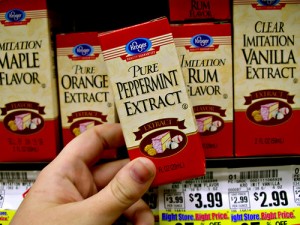 There was a time when the majority of consumers believed that name brands were better than generic store brands. With a perceived higher quality attached to name brands, products with those brand names on them came with higher prices.
There was a time when the majority of consumers believed that name brands were better than generic store brands. With a perceived higher quality attached to name brands, products with those brand names on them came with higher prices.
However, the perception has shifted (I reported on the shift to store brands here on Corporate Eye multiple times over the past few years — links to those stories and statistics can be found at the end of this article). Today, most consumers believe that store brands and name brands are equal.
The perception gap between store brands and name brands has closed rapidly over the past few years. A recent study from the Integer Group found that 64% of consumers do not think that name brands are better quality than store brands (up from 57% in 2010). Today, 77% of shoppers consider both name brand and store brand products before they make a purchase. The percentage is even higher among women at 90%. Considering that women make or influence the vast amount of purchase decisions, this is an extremely important statistic.
The data from the Integer Group’s “Private Label” report also reveals that brand preference can be greatly affected by category. Important findings related to category brand preferences include:
- Health and Beauty: 74% of women prefer name brand health and beauty products, but just 56% of men say they prefer name brands in this category.
- Laundry Detergent: 69% of male and female consumers prefer name brand laundry detergent (the category where brand names were ranked highest in the study).
- Medicine and Milk: Only 26% of all consumers prefer name brand medicine and milk over store brands.
The rise of store brands isn’t new. The shift has been happening for years as consumers have access to more information and can learn the ingredients in products within minutes. Comparing a specific name brand product to a generic brand product simply requires a web search and a few minutes of reading. With smartphones in hand, consumers can even research brands and products in stores when they’re actively making a purchase decision.
Store brands are well positioned to leverage this shift and steal more market share from name brands. On the other hand, name brands need to focus on building differentiated perceptions in consumers’ minds before they arrive in stores. It’s more important than ever for name brands to tap into consumers’ emotions and create the perception that there is no substitute for the name brand.
Is your brand up to the challenge?
More About Store Brand Trends and Statistics
- Private Label Brands Show Impressive Growth (July 30, 2009)
- Economic Considerations, Value and Store Brands will Dominate Purchase Trends in 2010 (December 18, 2009)
- 9 out of 10 Consumers Agree – Store Brands and National Brands are Equal (April 9, 2010)
- Store Brands Still Going Strong (July 27, 2011)
- Private Label Brands Take the Lead from National Brands (March 21, 2012)
You can download the full report here.
Image: Lisa Brewster
Lucy is Editor at Corporate Eye


